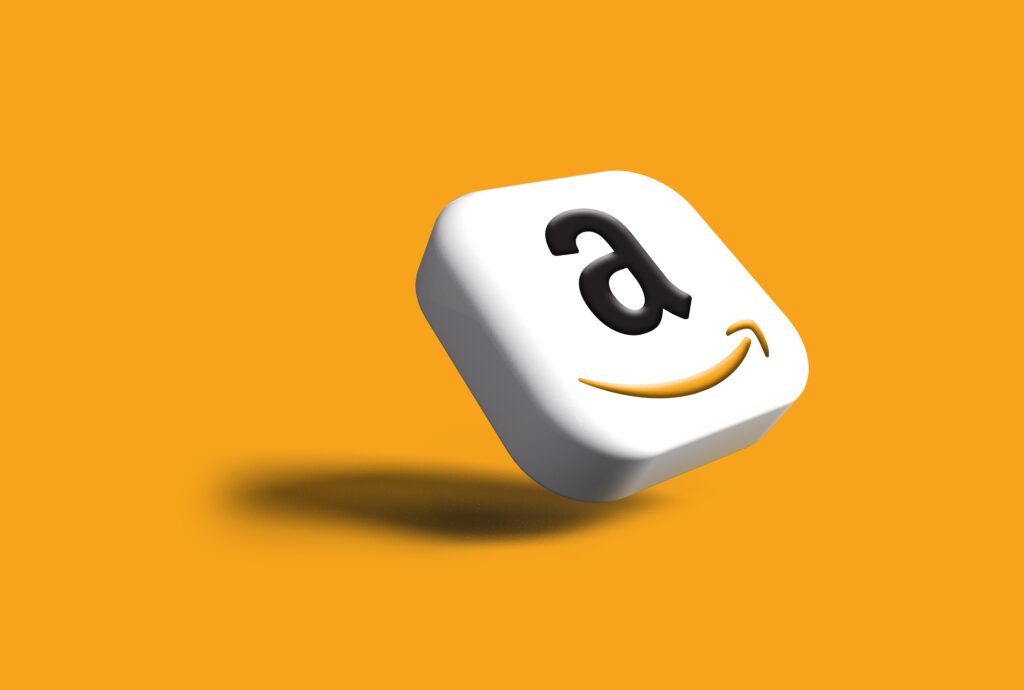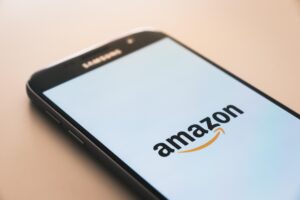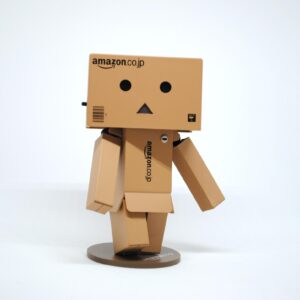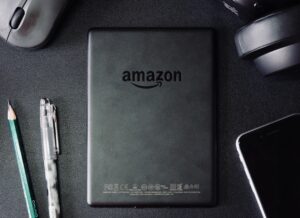20 Thrilling Facts About Amazon
Revealing the Vision and Innovation Fueling the World’s Most Successful Online Retailer. Amazon has revolutionized the way we shop, bringing convenience and variety to our fingertips. From books to electronics to groceries, Amazon has become a one-stop-shop for millions of customers around the world. But there’s much more to this tech giant than just its e-commerce platform. Here are some interesting facts about Amazon:

Amazon was founded by Jeff Bezos in 1994, and it started as an online bookstore.
1 Bezos saw the potential of the internet to disrupt traditional brick-and-mortar bookstores, and he set out to create an online marketplace that offered a wider selection of books at lower prices.
The first book sold on Amazon was “Fluid Concepts and Creative Analogies” by Douglas Hofstadter. From those humble beginnings, Amazon has grown into a massive global retailer that offers a wide range of products, from books and electronics to groceries and streaming media.
Why Jeff Bezos chose the name for his company
2 According to Bezos, he chose the name “Amazon” because he wanted a name that was “exotic and different,” and that would reflect the vast size and scope of his vision for the company. He also wanted a name that would be easy to remember, and that would be appealing to customers around the world.
 Bezos has said that he considered a number of different names for the company before settling on “Amazon,” including “Cadabra” and “Relentless.” However, he ultimately chose “Amazon” because he felt that it best captured the spirit of what he was trying to build: a vast, powerful, and unstoppable force in the world of e-commerce.
Bezos has said that he considered a number of different names for the company before settling on “Amazon,” including “Cadabra” and “Relentless.” However, he ultimately chose “Amazon” because he felt that it best captured the spirit of what he was trying to build: a vast, powerful, and unstoppable force in the world of e-commerce.
Today, the name “Amazon” has become synonymous with online shopping, and the company has grown to become one of the largest and most influential companies in the world.
Amazon’s first headquarters was located in a house in Seattle, Washington.
3 Specifically in the neighborhood of Montlake. Jeff Bezos rented the house, which had a garage, and converted it into Amazon’s first office space.
Bezos famously bought doors from a local Home Depot to use as makeshift desks, and the company’s first employees worked long hours to build the website and fulfil orders. Later on, as the company grew, Amazon moved its headquarters to other locations in Seattle, such as South Lake Union, before expanding to other cities and countries around the world.
Amazon’s logo features a smile that goes from A to Z.
4 Amazon’s logo features an arrow that starts at the letter “A” and points to the letter “Z.” The arrow is meant to represent the company’s wide selection of products, from A to Z.
Additionally, the curve under the arrow is designed to resemble a smile, which is intended to suggest that Amazon’s customers are happy and satisfied with their purchases.
Over time, the logo has become one of the most recognizable corporate symbols in the world, and it has helped to establish Amazon’s brand as a leader in online retail.
Amazon has expanded into a wide variety of other businesses beyond its original core business of online retail.
5 Over the years, the company has made strategic acquisitions and developed new services and products that have allowed it to diversify and enter new markets. Here are some examples:
- Amazon Web Services (AWS): This is Amazon’s cloud computing platform that provides a wide range of services such as computing, storage, and databases to businesses and organizations. AWS has become one of the company’s most profitable businesses, generating billions of dollars in revenue each year.
- Amazon Prime: This is a subscription-based service that provides customers with a range of benefits such as free two-day shipping, access to streaming of movies, TV shows, and music, and other exclusive deals and discounts.
- Amazon Marketplace: This is a platform that allows third-party sellers to sell their products on Amazon. It has become a major source of revenue for the company, accounting for more than half of all units sold on Amazon.
- Amazon Studios: This is Amazon’s production company that produces original content for Amazon Prime Video. It has produced critically acclaimed shows such as “The Marvelous Mrs. Maisel” and “Transparent”.
- Amazon Fresh: This is Amazon’s grocery delivery service that allows customers to order fresh groceries online and have them delivered to their doorstep.
These are just a few examples of how Amazon has expanded into new businesses beyond its original core business of online retail.
The company continues to explore new markets and opportunities for growth, making it one of the most innovative and successful companies in the world.
Amazon’s Prime program has over 200 million members worldwide.
6 Amazon’s Prime program is a subscription service that offers a range of benefits to members.
 Prime members pay an annual or monthly fee to access benefits such as free two-day shipping on eligible items, access to streaming of movies, TV shows and music, free e-books, early access to select Lightning Deals and more.
Prime members pay an annual or monthly fee to access benefits such as free two-day shipping on eligible items, access to streaming of movies, TV shows and music, free e-books, early access to select Lightning Deals and more.
The program was launched in 2005 and has grown to become one of Amazon’s most successful initiatives, with over 200 million members worldwide as of 2021.
In addition to the core benefits, Amazon has also introduced additional perks for Prime members, such as Prime Day, a shopping event that offers exclusive discounts and deals for Prime members, and Prime Wardrobe, a service that allows customers to try on clothes at home before they buy them.
The Prime program has been instrumental in Amazon’s growth, as it has helped to create a loyal customer base and drive repeat purchases.
Amazon is actually the largest private employer in the United States.
7 With more than 1.3 million employees across the country. The company has grown rapidly over the past two decades, and its expansion has been fuelled by the growth of e-commerce and the rise of Amazon Prime. Amazon’s employees work in a wide range of roles, from warehouse workers and delivery drivers to software engineers and marketing executives.
The company has also been a major contributor to the U.S. economy, generating billions of dollars in revenue and creating thousands of jobs in communities across the country.
In 2020, Jeff Bezos stepped down as CEO of Amazon, and was succeeded by Andy Jassy.
8 Jeff Bezos announced that he would be stepping down as CEO of Amazon, a position he had held since the company’s founding in 1994. Bezos became the executive chairman of Amazon’s board, and he remained involved in the company’s strategic decisions.
Bezos was succeeded as CEO by Andy Jassy, who had been with Amazon since 1997 and had most recently been serving as the head of Amazon Web Services (AWS), the company’s cloud computing platform. Jassy took over as CEO in July 2021, and he is responsible for leading the company’s day-to-day operations and implementing its long-term strategy.
Bezos’ departure marked a significant change for Amazon, as he had been the company’s leader and public face for more than two decades. However, the company has continued to thrive under Jassy’s leadership, and it remains one of the most valuable and influential companies in the world.
Amazon has been a leader in innovation since its founding in 1994
9 The company has continually pushed the boundaries of what’s possible in the world of e-commerce and beyond, introducing new products, services, and technologies that have changed the way people live and work.
Here are some examples of Amazon’s innovation:
- One-Click Ordering: Amazon introduced the One-Click Ordering feature in 1997, which allows customers to make purchases with just one click of a button, making the checkout process faster and more convenient.
- Amazon Prime: Amazon launched the Prime subscription service in 2005, which offers free two-day shipping on eligible purchases, as well as access to streaming of movies, TV shows, and music, and other exclusive deals and discounts.
- Amazon Web Services (AWS): Amazon launched AWS in 2006, which provides cloud computing services to businesses and organizations. AWS has become one of the most profitable businesses for Amazon, and it’s used by millions of customers around the world.
- Amazon Go: Amazon introduced its first cashierless convenience store, Amazon Go, in 2018. The store uses sensors and cameras to automatically track customers’ purchases, eliminating the need for traditional checkout lines.
- Alexa: Amazon launched its voice-activated digital assistant, Alexa, in 2014. Alexa can be used to control smart home devices, play music, order products from Amazon, and more.
These are just a few examples of the many ways that Amazon has been a leader in innovation. The company continues to invest heavily in research and development, and it’s likely that we’ll see many more ground-breaking products and services from Amazon in the years to come.
Amazon has faced criticism over the years for its treatment of workers
10 Particularly those who work in its warehouses and distribution centers. Some of the most common criticisms include:
- Low wages: Many Amazon workers, particularly those in entry-level positions, are paid relatively low wages. This has led to criticism from labor advocates who argue that Amazon should pay its workers a living wage.
- Poor working conditions: Amazon has been criticized for the working conditions in its warehouses, which can be physically demanding and stressful. Some workers have reported long hours, inadequate breaks, and limited access to restroom facilities.
- Anti-union stance: Amazon has been criticized for its stance on unions and its efforts to prevent its workers from unionizing. Some critics argue that Amazon’s anti-union stance is an attempt to maintain control over its workforce and prevent workers from advocating for better wages and working conditions.
- Safety concerns: Amazon workers have reported a number of safety concerns in its warehouses, including accidents and injuries related to repetitive motion, heavy lifting, and working in close proximity to robots and other automated equipment.
Amazon has responded to these criticisms by implementing some changes, such as increasing wages and improving safety measures in its warehouses. However, some critics argue that these changes are not enough and that Amazon should do more to address the concerns of its workers.
Amazon has a vast global presence, with operations in dozens of countries around the world.
11 The company has built a massive e-commerce empire, which includes a vast network of fulfillment centers and distribution facilities that enable it to ship products to customers quickly and efficiently.
Amazon has also expanded into a wide variety of other businesses and markets, including cloud computing, digital streaming, and smart home devices.
Its Amazon Web Services (AWS) division is a leading provider of cloud computing services, while its Prime Video service competes with other streaming platforms like Netflix and Hulu. Amazon’s Echo smart speakers and Alexa digital assistant have also become popular consumer products, competing with other smart home devices like Google Home and Apple’s HomePod.
Amazon’s global presence has helped it to become one of the most valuable and influential companies in the world, with a market capitalization of more than $1.5 trillion as of 2021. However, it has also faced regulatory scrutiny and criticism from some quarters for its size and market power, particularly in the e-commerce and cloud computing industries.
Amazon’s company headquarters is located in Seattle, Washington, in the South Lake Union neighbourhood.
12 The company has several office buildings in the area, which house thousands of employees who work in a wide range of roles, including software development, marketing, and customer service.
The South Lake Union area has become a hub for technology companies in Seattle, with Amazon being one of the largest and most influential employers in the area. The company has played a significant role in the redevelopment of the neighbourhood, investing in infrastructure improvements, parks, and other public spaces.
In addition to its headquarters in Seattle, Amazon has a significant presence in other cities and regions around the world. The company has expanded rapidly in recent years, opening new offices and fulfillment centers in cities across the United States and around the world.
Amazon’s acquisition of Whole Foods in 2017 was its largest acquisition to date.
13 The deal was valued at $13.7 billion, and it gave Amazon a significant foothold in the grocery industry.
Whole Foods is a high-end grocery chain that specializes in natural and organic foods. The acquisition allowed Amazon to expand its offerings in the grocery industry, which has become an increasingly important area of focus for the company.
Following the acquisition, Amazon integrated its Prime membership program with Whole Foods, offering discounts and other benefits to Prime members who shop at Whole Foods stores.
The company also introduced a range of new initiatives, such as online ordering and delivery, in an effort to streamline the grocery shopping experience for customers.
The acquisition of Whole Foods was seen as a significant move for Amazon, as it signalled the company’s ambition to become a major player in the grocery industry. Since then, Amazon has continued to expand its presence in the industry, launching new initiatives like Amazon Fresh and opening new physical grocery stores.
Amazon’s Echo line of smart speakers, which are powered by the voice assistant Alexa, has been a huge success, with over 100 million devices sold worldwide.
14 Amazon’s Echo line of smart speakers is a popular product line that uses voice recognition technology to enable users to interact with Alexa, Amazon’s virtual assistant.
 The Echo speakers come in a range of sizes and designs, from the compact Echo Dot to the high-end Echo Studio, and they can be used to play music, set reminders, make phone calls, control smart home devices, and more.
The Echo speakers come in a range of sizes and designs, from the compact Echo Dot to the high-end Echo Studio, and they can be used to play music, set reminders, make phone calls, control smart home devices, and more.
The Echo line of smart speakers has been a major success for Amazon, and it has helped to establish the company as a leader in the smart home market. In addition to the Echo speakers, Amazon has also introduced other Alexa-enabled devices, such as the Echo Show, which features a built-in display for video calling and streaming media.
Amazon’s first original TV show, “Transparent,”
15 The show won several Emmy awards and helped establish the company as a serious player in the entertainment industry. It was created by Jill Soloway and starred Jeffrey Tambor as Maura Pfefferman, a transgender woman who comes out to her family late in life.
“Transparent” was critically acclaimed for its nuanced portrayal of gender and sexuality, and it went on to win multiple Emmy Awards, including Outstanding Directing and Outstanding Lead Actor for Tambor.
The success of “Transparent” helped to establish Amazon as a player in the original content market, and the company has since gone on to produce a wide range of popular shows, such as “The Marvelous Mrs. Maisel,” “The Man in the High Castle,” and “Jack Ryan.”
Amazon is committed to sustainability.
16 In 2019, the company announced a new goal of being carbon neutral by 2040. This is an ambitious target, as it means that Amazon aims to eliminate or offset all of the carbon emissions associated with its operations, including its vast network of fulfillment centers, delivery vehicles, and data centers.
To achieve this goal, Amazon has launched a range of new initiatives focused on reducing its carbon footprint. These include investments in renewable energy, such as wind and solar power, and the development of new technologies to make its operations more efficient and sustainable.
 Amazon has also launched a new program called “Shipment Zero,” which aims to make all Amazon shipments net zero carbon, with the goal of achieving 50% of all shipments net zero by 2030. The company has also committed to using 100% renewable energy for all of its operations by 2025, and has announced plans to purchase 100,000 electric delivery vans to reduce its reliance on fossil fuels.
Amazon has also launched a new program called “Shipment Zero,” which aims to make all Amazon shipments net zero carbon, with the goal of achieving 50% of all shipments net zero by 2030. The company has also committed to using 100% renewable energy for all of its operations by 2025, and has announced plans to purchase 100,000 electric delivery vans to reduce its reliance on fossil fuels.
In addition to these initiatives, Amazon has also been working to reduce waste and increase recycling in its operations. The company has launched a number of new programs focused on reducing packaging waste and increasing the use of recycled materials in its products and operations.
While Amazon still faces criticism from some environmental groups and advocates for its carbon footprint and its impact on local communities, the company’s commitment to sustainability is seen as an important step towards reducing the environmental impact of its operations.
Amazon has experimented with a number of innovative delivery methods, including drones and self-driving delivery vehicles.
17 One of the most notable of these experiments is Amazon Prime Air, which is a delivery system that uses unmanned aerial vehicles, or drones, to deliver packages to customers.
Amazon has been testing this technology in a number of locations around the world, and it has the potential to revolutionize the way that packages are delivered in the future.
In addition to drones, Amazon has also experimented with other delivery methods, such as using robots to deliver packages within its warehouses and developing a network of lockers where customers can pick up their packages at their convenience.
The company has also launched a service called Amazon Key, which allows customers to grant access to their homes or cars to delivery drivers, in order to enable in-home or in-vehicle delivery.
These delivery methods have helped to differentiate Amazon from its competitors and demonstrate the company’s commitment to innovation and customer service.
Shel Kaphan was Amazon’s first-ever employee.
18 He was hired by Jeff Bezos in 1994, shortly after Bezos founded the company.
Kaphan played a critical role in building Amazon’s early technology infrastructure. As the company’s first Chief Technology Officer, he helped to develop many of the systems and technologies that would eventually become core components of Amazon’s e-commerce platform.
Kaphan was responsible for building Amazon’s first website, which went live in 1995, and he oversaw the development of the company’s early order processing and fulfilment systems. He was also instrumental in the development of Amazon’s recommendation system, which uses algorithms to suggest products to customers based on their browsing and purchasing history.
After leaving Amazon in 1999, Kaphan went on to work on a number of other technology start-ups, including the online grocery delivery service Webvan and the mobile payments company Lemon. However, he remains closely associated with Amazon’s early years, and is widely recognized as one of the company’s key early contributors.
Amazon’s customer reviews have become a ubiquitous feature of online shopping, and they have helped to establish the company as a leader in e-commerce.
19 Amazon’s customer review system allows shoppers to rate products on a five-star scale and to write detailed reviews describing their experiences with the products. The system is open to all customers, and it has become an important resource for shoppers looking to make informed purchasing decisions.
Amazon’s customer reviews are widely regarded as being more reliable and trustworthy than reviews on other e-commerce platforms, in part because the company has taken steps to prevent fake reviews and to ensure that reviews are written by real customers who have actually purchased and used the products they are reviewing.
In addition to helping shoppers make informed purchasing decisions, Amazon’s customer review system has also become an important source of feedback for sellers and manufacturers. Reviews can provide valuable insights into customer preferences and can help sellers identify areas for improvement in their products and services.
Overall, Amazon’s customer review system has played a significant role in the company’s success, helping to build trust with customers and establish Amazon as a leader in online retail.
Amazon’s founder, Jeff Bezos, is one of the wealthiest people in the world, with a net worth of over $170 billion.
20 Bezos is the founder of Amazon, and he has played a key role in the company’s success over the past two decades. Under his leadership, Amazon has grown from a small online bookstore into a global retail and technology powerhouse, and Bezos has become one of the most influential business leaders of his generation. Despite his immense wealth, Bezos has also been known for his philanthropy, and he has donated billions of dollars to charitable causes through the Bezos Day One Fund and other initiatives.




